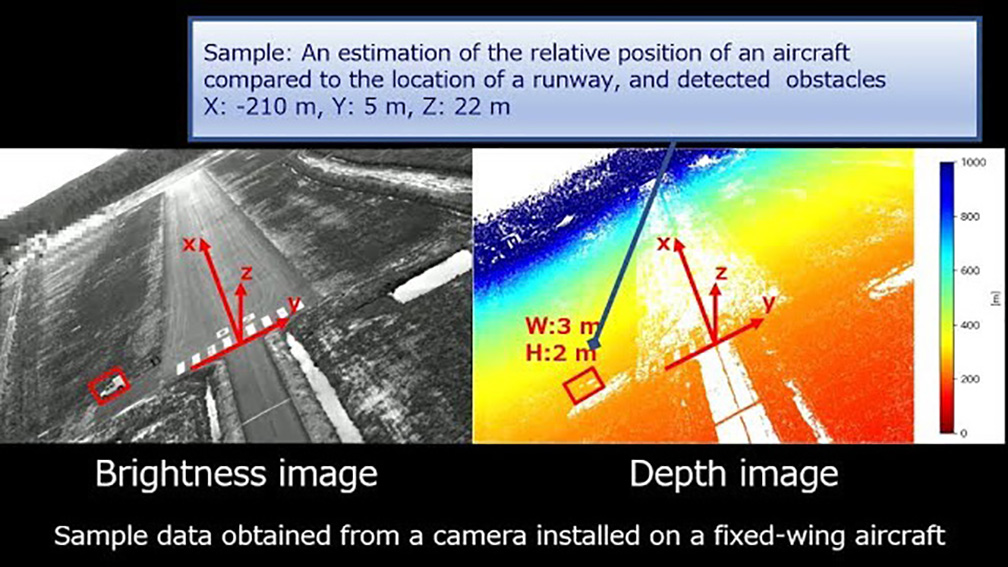- Home
- Technology
- Ricoh's Technology
- Super telephoto stereo camera
Super telephoto stereo camera
- *
- As confirmed by Ricoh in October 2018
Background
Ricoh has been developing stereo cameras for a wide range of applications on the JOIPO platform, a fusion of proprietary technologies in optics, image processing, and device mounting nurtured over many years. For industrial applications, the RICOH SV-M-S1 stereo camera is already available and used for 3D measurement in areas where speed, accuracy, and versatility are required. It is used in many systems including robot vision, monitoring, and object recognition systems.
For in-car-mounted systems, Ricoh started mass-production of the world's smallest in-car-use stereo camera in October 2016. In September 2017, Ricoh started mass-production of an in-car-use stereo camera that can recognize even minor roughness of road surfaces, using Ricoh's proprietary dense stereo matching technology used in 3D image processing.
Ricoh's ultrawide-angle stereo camera can also now be installed on a drone, enabling the drone to fly autonomously in a non-GPS environment and avoid obstacles in its path.
These technological strengths have been exploited in the development of this new super telephoto stereo camera. The new camera features 4K resolution and captures information at long distances in real time.
Solution
High-resolution (4K), real-time distance measurement captures objects up to 1,000 meters away.
The super telephoto stereo camera has a range of applications, including aviation and railroad systems where long-distance information is valuable as well as harbor control where remote objects need to be monitored.
Technical highlights
- Accurate measurement at long distances
Ricoh's original optical design and calibration technologies (precision technologies in optical properties evaluation, image correction based on optical properties, and device mounting) have been optimized for long distance measurement. Accuracy is guaranteed for short and long distances alike.
- Real-time stereo distance measurement at high resolution (4K)
Ricoh's proprietary image technologies have now been optimized and implemented as hardware. 4K stereo images are processed in real time and outputs are obtained quickly.
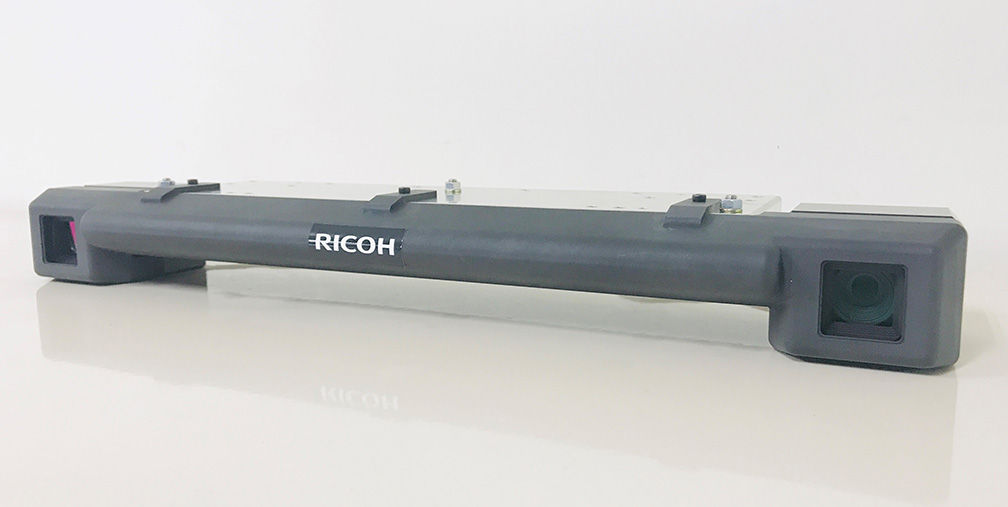 Super telephoto stereo camera
Super telephoto stereo camera
Applications of super telephoto stereo camera
Application 1. Manned and unmanned vehicles
The super telephoto stereo camera captures very precise images of a remote area with three dimensional resolution. It allows vehicles moving quickly to estimate their own position and detect obstacles.
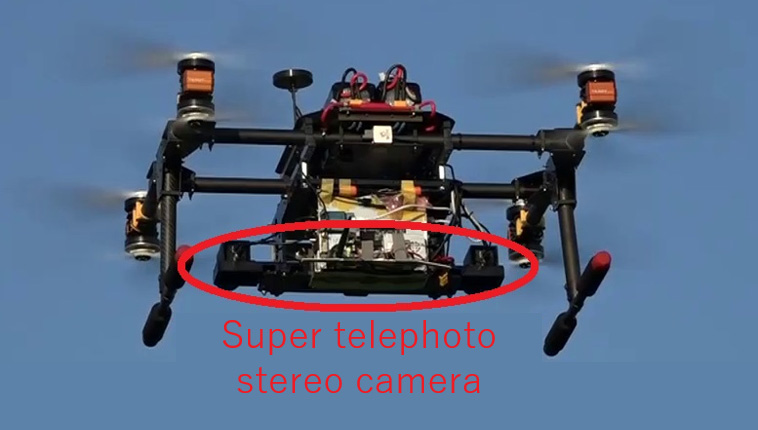 Super telephoto stereo camera installed on multi-rotor helicopter
Super telephoto stereo camera installed on multi-rotor helicopter
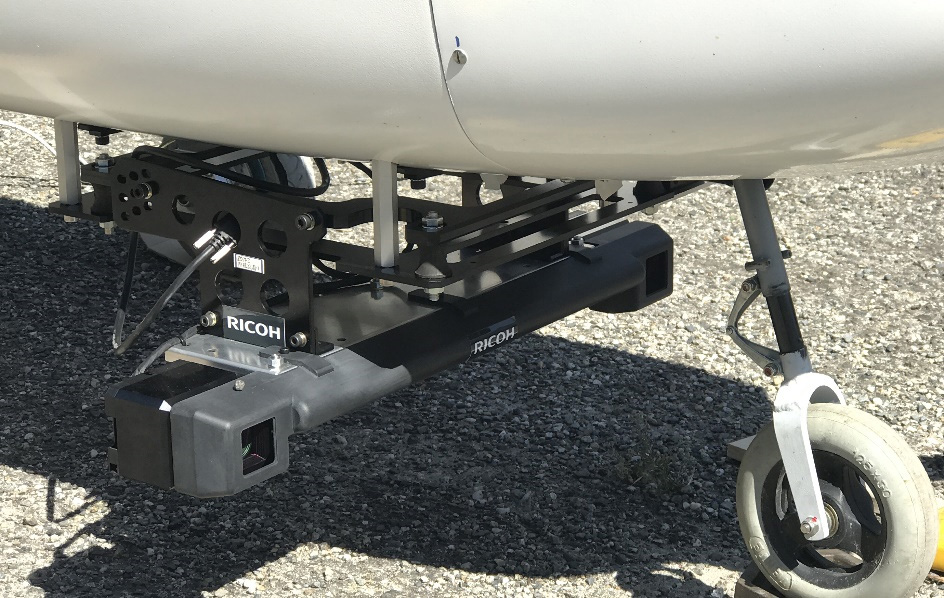 Super telephoto stereo camera installed on fixed-wing aircraft
Super telephoto stereo camera installed on fixed-wing aircraft
(The estimated position of the aircraft relative to the location of the runway and detected obstacles.)
Application 2. Monitoring
A monocular camera does not allow distance measurement to a remote moving object of unknown size. The super telephoto stereo camera makes it possible to measure the distance to a remote object in real time.
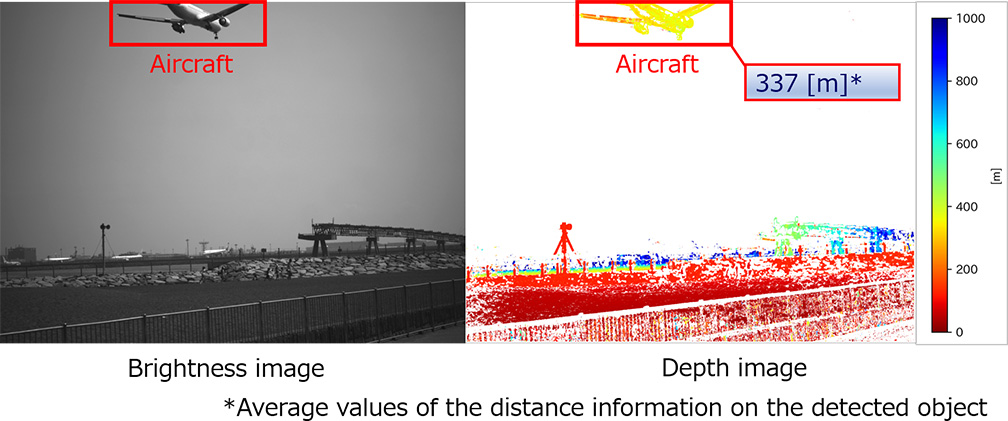 Sample data obtained when the moving object is monitored from the ground
Sample data obtained when the moving object is monitored from the ground
(Estimation of the position of a flying object)
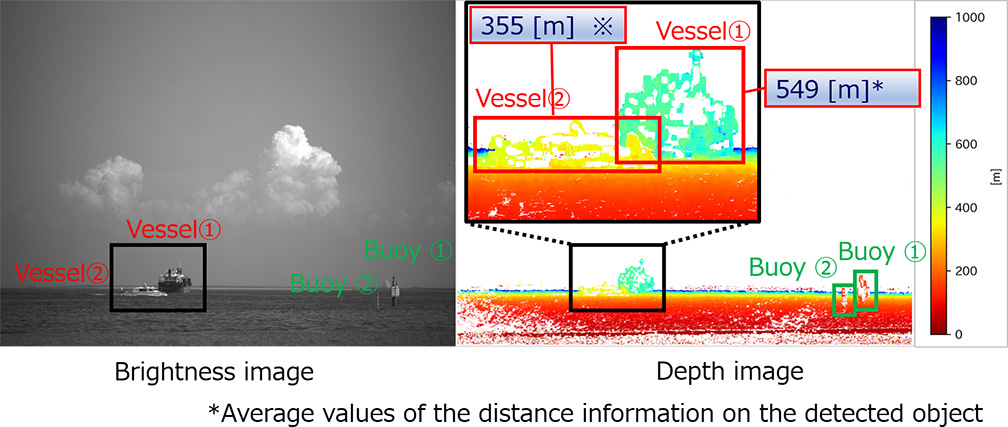
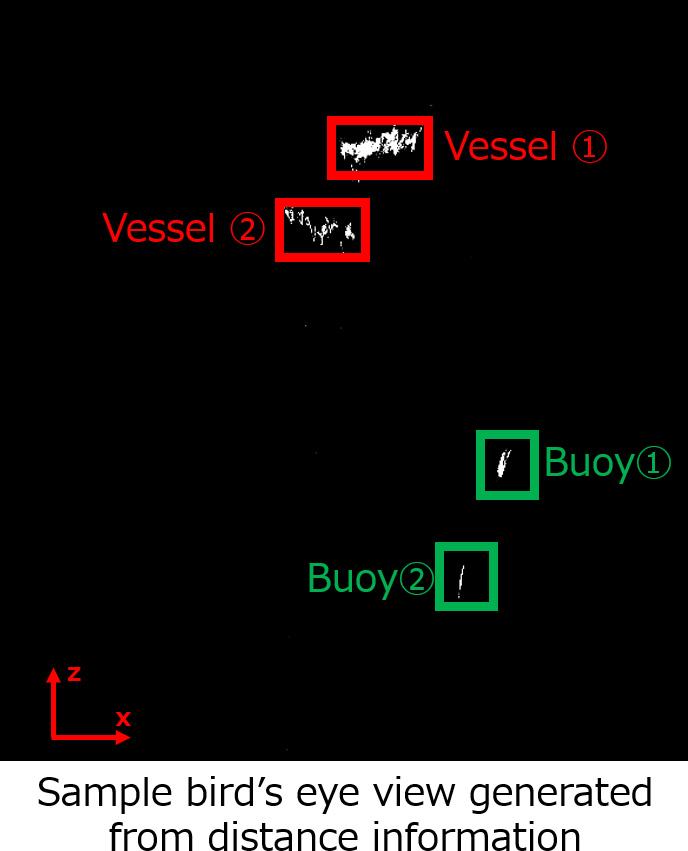 Sample data obtained when a harbor is monitored from the coast
Sample data obtained when a harbor is monitored from the coast
(Estimation of relative positions between vessels)
Ricoh's vision
Ricoh will continue to utilize the technological assets of its stereo cameras to promote research and development, thus contributing to the security and safety of society.
- *
- This research and development program is a joint effort between the University of Tokyo and Ricoh. The program is endorsed by the New Energy and Industrial Technology Development Organization (NEDO), a national research and development institute of Japan, under the theme of Research and Development of Next Generation Automatic Flight Control Systems, a part of the project for Advanced Aircraft Systems toward Practical Application. (It is further endorsedby the Mitsubishi Space Software; Japan Aerospace Exploration Agency (JAXA); and the Electronic Navigation Research Institute (ENRI) of the National Institute of Maritime, Port and Aviation Technology.
- *
- It is also a related research and development activity for Horizon 2020 VISION (the validation of integrated safety-enhanced intelligent flight cONtrol), a Europe-Japan collaborative research project.
Related information
- Horizon 2020 VISION (EU Publications Office Website)
- The Fusion of Optics and Digital Image Processing: JOIPO Platform
- Stereo Camera
Sorted by : field “Machine Vision”
